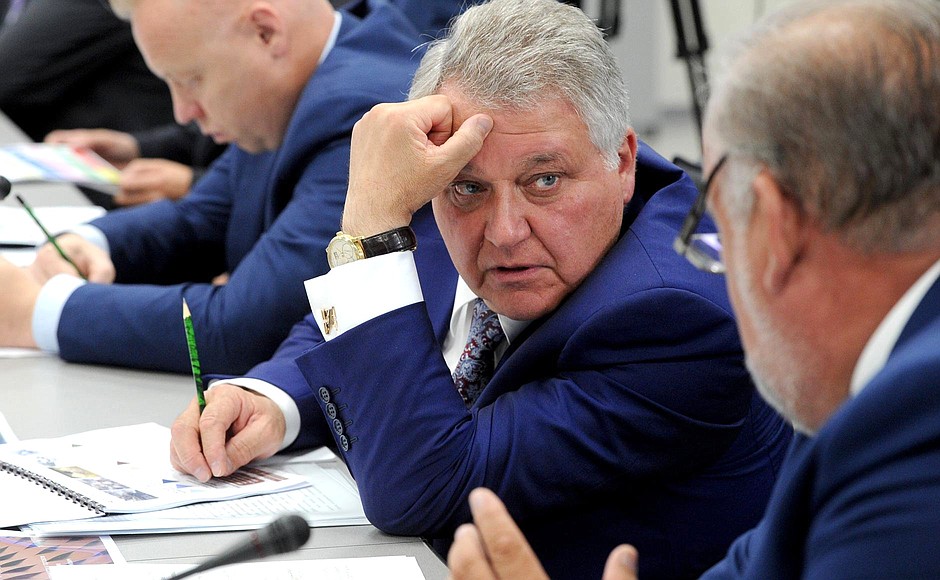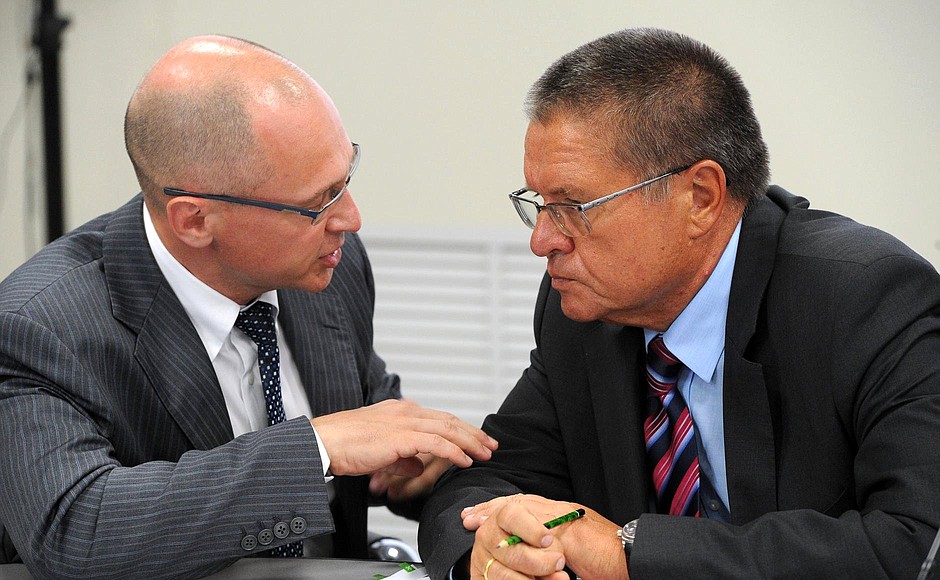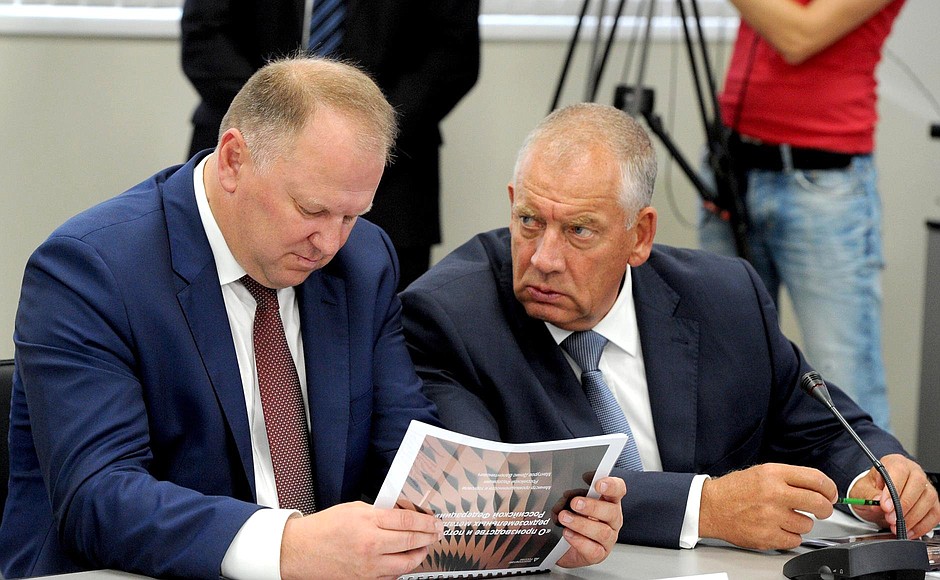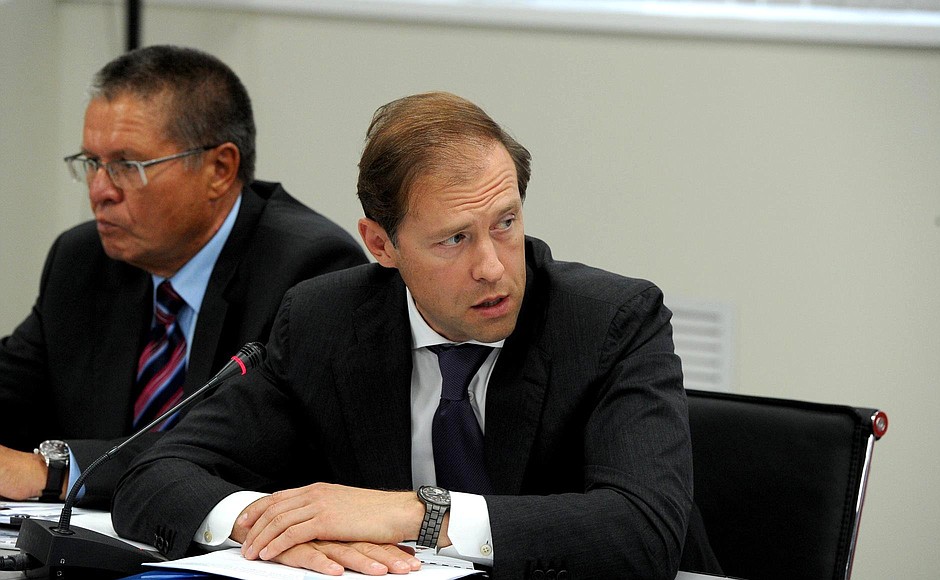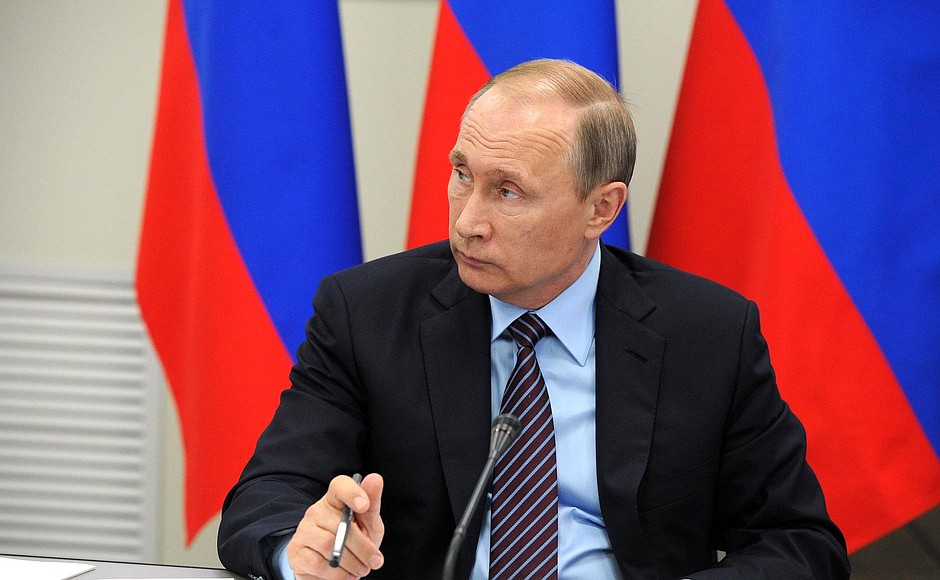Before the meeting the President took part in launching the production of rare earth metals at the company Akron and familiarised himself with its major industrial processes.
* * *
Beginning of meeting on developing production and use of rare earth metals
President of Russia Vladimir Putin: Good afternoon. Today we will discuss the condition of the domestic production of rare earth metals and the future goals of this industry.
Why did I ask you to come here? First, this is the location of practically our first production line; second, I remember well the discussion we had several years ago with the participation of my colleagues, some of whom are now in this hall.
Back then, I remember, there were different opinions: some were in favour of acquiring assets abroad and using them here in Russia; others were strongly opposed to this, not only because it was about spending budget money, the money from the reserves; they said that we have a good opportunity to start production of rare earth metals in our country.
I would like to discuss with you today where we stand. At the outset of our meeting, I would like to note that Russia ranks second worldwide in reserves of rare earth metals. I understand this is in terms of explored and proven reserves. In fact, who knows, we may rank first given the vastness of our territory and the potential unexplored reserves.
The range of uses of rare earth metals is fairly wide. Their production is critical to ensuring the defence capability of our country and manufacturing modern weapons and military equipment.
The production of rare earth metals in Russia is only about two percent of global production. We rank second in terms of proven reserves, but account for only two percent of global production. Consumption of final products is still largely met through imports. The share of imports is about 90 percent.
The range of uses of rare earth metals is fairly wide. We just talked about it with our colleagues. It includes petrochemistry and power engineering, shipbuilding and the automotive industry, electronics and the construction industry. In addition, their production is critical to ensuring the defence capability of our country and manufacturing modern weapons and military equipment. In short, resolving numerous problems in the economy and security depends on the effective performance of the rare earth metals industry.
Given the importance of this industry, a dedicated sub-programme to support it was launched in 2013 within the framework of the corresponding state programme. This year, its first phase will be completed that will give us patents, know-how and tested technology ready for commercialisation. Over 4.2 billion rubles were allocated for this purpose from the federal budget over four years, and another 4.6 billion rubles were allocated from extrabudgetary sources.
Please report about progress made during this time, the level of demand for R&D projects, especially on the part of domestic producers, and whether they hold any promise from the point of view of consumers. I am aware that there were plans to launch major investment projects based on existing R&D, and to create full-cycle Russian manufacturing facilities from mining to production of pure metals.
Resolving numerous problems in the economy and security depends on the effective performance of the rare earth metals industry.
Today – and I have just spoken with Mr Kantor about this – the world market of rare earth metals is drastically different from what it was in 2012, before the start of this programme. So, the price environment has fundamentally changed and the scale of proposals has stabilised.
The average prices on rare earth metals, which peaked in 2011 at $140 a kilo, dropped to $20 per kilo by 2016. The world market of rare earth metals is estimated at about 130,000 tonnes per year, which, understandably, affects the enterprise’s investment plans.
At the same time, even under these circumstances, additional opportunities are opening up in the market; rare earth metals are being used in new fields and the Russian economy is launching import replacement.
Naturally, it is important to take into account these trends as well, estimate the prospects of the industry’s development in the next five, ten and more years and draft investment programmes on this basis. It is essential to establish priority areas for business in rare earth metals – the areas where Russian companies may be fully competitive and successful.
A dedicated sub-programme to support it was launched in 2013 within the framework of the corresponding state programme.
Our meeting is attended by representatives of domestic producers and consumers of rare earth metals. I suggest discussing what legislative and organisational decisions we should make to promote the industry’s growth and consolidation.
Let’s get down to work. I’m giving the floor to [Industry and Trade] Minister Denis Manturov.
Minister of Industry and Trade Denis Manturov: Thank you, Mr President.
We have prepared a presentation to illustrate the results of the programme. But before I report on the results, I would like to provide a more detailed picture, including the early phase of the decision made in 2012.
Back then, the rare earth metals segment was up worldwide. The prices for rare earth metals were growing, and there were forecasts for even greater consumption. However, Russia’s industry was a technological laggard, unlike China, the largest manufacturer, the United States, and some other countries, which was a risk factor for national security, especially considering that these metals are used in production and are hardly replaceable in high-tech industries.
Additional opportunities are opening up in the market; rare earth metals are being used in new fields and the Russian economy is launching import replacement.
I’m referring, primarily, to permanent magnets, alloys, catalysts, luminophores, ceramics and other important products. This was the time when we drafted a separate development programme for the industry. During its first phase, we will do the necessary research and technical groundwork which we will then use to extract rare earth metals, divide concentrates into individual oxides, and make products based on these metals. Thirteen R&D projects have been completed, the remaining 27 will be completed before the end of 2016.
The second phase of the programme, which starts next year, includes industrial implementation of the available technology by Russian enterprises. However, I must say that we are faced with several problems. One of them is the continued low level of consumption of rare earth metals in the form of finished products in our country. Unfortunately, it is estimated at about 1,000–1,100 tonnes a year, which does not incentivise businesses to develop large-scale projects. We take into consideration the changes on the world market for rare earth metals that you mentioned.
All this has substantially worsened the financial situation of major players outside our country, in particular, China, and caused the bankruptcy of the US company Molycorp which you mentioned. There were plans to acquire this company at the peak of prices for REM in 2011, also to speed up the transfer of the technology, which we lacked at that time.
It is important to estimate the prospects of the industry’s development in the next five, ten and more years. It is essential to establish priority areas for business in rare earth metals – the areas where Russian companies may be fully competitive and successful.
On the other hand, the change in the world market worked to our advantage. We promptly used the pause in the growth of consumption of rare earth metals and managed to increase our own technological competences through state investment.
We hope this pause will not last long and prices will gradually go up, which will allow us to make full use of the capacity accumulated over these years.
Today the Solikamsk Magnesium Works (Perm Territory), which receives raw materials from the Lovozersk Ore Mining and Dressing Plant (Murmansk Region), is the main producer of rare earth metal carbonates. Rostec and IST Group of Companies are implementing the industry’s flagship project of developing the Tomtor rare metals deposit and today colleagues will give us a detailed account of its implementation.
The company Acron where we are now, Uralkhim, FosAgro, Skygrad in the Moscow Region and the Hydrometallurgical Plant in Lermontov (Stavropol Territory) are also playing an active role in developing production of rare earth metals.
Considering the current circumstances, deadlines for the implementation of some projects may be delayed a bit. We will provide state support for these projects using current mechanisms – by subsidising interest rate payments, and also via the Industry Development Fund.
To encourage the consumption of Russian rare earth metals we advise using Government Resolution #719, which determines the criteria of the country of origin as regards rare earth metals. This will make it possible to demand the use of domestic rare earth metals for high-tech production.
In general, I think the programme was started at the right time. The projects that are being launched today, and the already available technology will allow us to fulfil the tasks you set in 2012 by 2020.
Thank you for your attention.
Vladimir Putin: Thank you.
<…>
